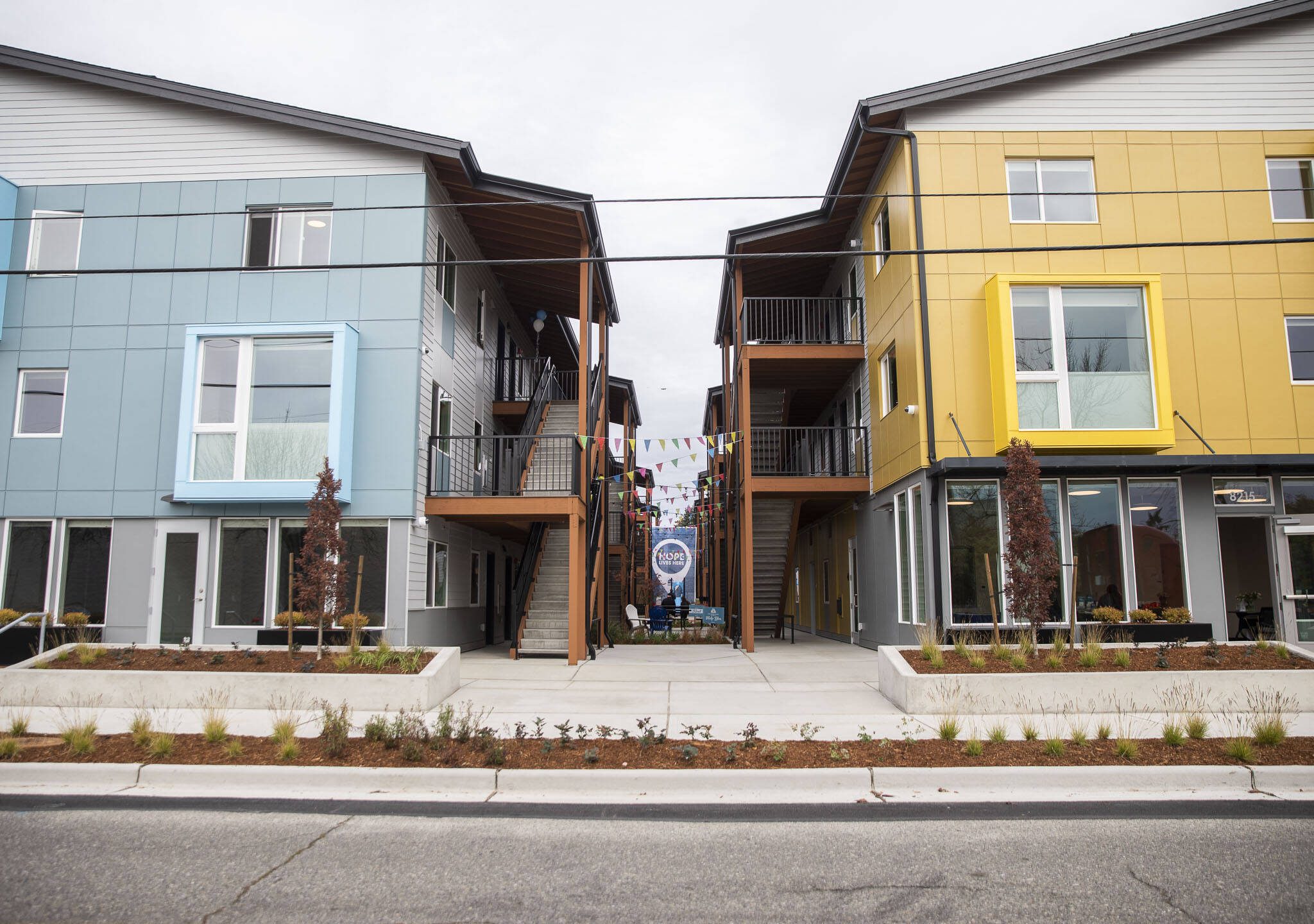EVERETT — What’s the solution to the housing crisis? Building more housing.
It sounds simple, but getting to that point — and at the scale required to fix a problem that’s been worsening for more than a decade — is a big ask.
On Tuesday, a panel of experts discussed how to do just that, in a virtual presentation hosted by Economic Alliance Snohomish County.
Right now, most of the numbers in Snohomish County don’t tell a positive story. Based on occupational median incomes, more than two-thirds of workers in the county don’t earn enough on their own to rent the average apartment without being rent-burdened, or spending more than a third of income on housing. The average apartment in Snohomish County costs $2,114 per month, according to the Alliance for Housing Affordability, a local housing research group. Between 2013 and 2023, rents went up 71%, after adjusting for inflation.
Only 1.6% of workers in the county make enough to comfortably purchase a single-family home.
The panel discussed a number of ways housing advocates can work to improve affordability in the county. Along with increasing housing stock, the group also discussed combatting homelessness and pushing back against “NIMBYism,” a term for organized neighborhood groups who rise up against housing developments. ”NIMBY” stands for “not in my backyard.”
The state Department of Commerce has estimated the state needs to add 1.1 million homes by 2044, with more than half of them affordable to people at the lowest income levels.
Between 2020 and 2023, more than 46,400 housing units were built every year, slightly above the projected annual need of 46,118 units, the Washington State Standard reported. Only 23,877 units of apartments and duplexes, however, were built in that time. Those options for low and middle-income residents lagged behind the estimated 27,011 units needed each year.
For John Hull, the CEO of the Everett Gospel Mission homeless shelter, increasing the availability of affordable housing is the most comprehensive way of solving the ongoing homelessness crisis.
“If we had policies in place, if we had zoning requirements in place or allowances in place, and we had neighbors that would allow us to develop projects that we could provide affordably for $500 a month, most of these individuals wouldn’t need to be in our shelters,” Hull said. “I think that is the systemic issue.”
Hull also said building transitional housing can be a way of bringing people out of homelessness. A major issue, however, is preventing homelessness before it happens.
One example is finding assistance for people at risk of homelessness before it’s too late. The Volunteers of America Western Washington administers a phone program, 2-1-1, connecting callers who need food, transportation or housing to services. Every week, the organization turns away 250 households seeking affordable housing but cannot receive help because they have not yet gotten an eviction notice, said Rachel Downes, the director of strategic initiatives at affordable housing nonprofit Housing Hope.
People don’t qualify for Snohomish County’s Coordinated Entry System, which provides housing assistance, unless they will be losing their housing within two weeks.
“More housing of all types, that’s our prevention mechanism,” Downes said. “When we have enough housing so that rents are affordable and people have a place to go, that is our prevention.”
Working to educate “NIMBY” advocates is another goal for housing organizations, said Tina Vlasaty, deputy director of the Puget Sound branch of the Local Initiatives Support Corporation, a Seattle-based nonprofit that supports economic development and affordable housing construction.
One example was in Vlasaty’s own West Seattle neighborhood, when a 100-unit apartment building was set to be built on land previously occupied by a single-family home. Vlasaty’s neighbors rose up in opposition to the project over parking concerns, she said, but she took it as an opportunity to educate them on the benefits of increased housing availability and density.
“I think the challenge around ‘NIMBYism’ is we listen to the loudest voices, the voices of people who are most likely to navigate government systems, who are the most privileged. And we have to stop doing that,” Vlasaty said. “We have to stop saying just because you’re the loudest, you get to decide what happens for an entire community. Some of it takes bravery, some of it takes just being able to bust the myths about affordable housing.”
If the housing crisis isn’t an emergency today, it will be in the future if nothing changes, said Chris Collier, a project manager at the Alliance for Housing Affordability.
“Housing will never be affordable while it’s a profit driver, while there’s profit to be made,” Collier said. “Whether it’s the builder, whether it’s the landlord, whether it’s the owner who’s looking at housing and saying, ‘I can make money off this,’ you’re always going to struggle with that affordability … This is an all of us problem, to look at housing as separate from a way to make money.”
Will Geschke: 425-339-3443; william.geschke@heraldnet.com; X: @willgeschke.
Talk to us
> Give us your news tips.
> Send us a letter to the editor.
> More Herald contact information.

























